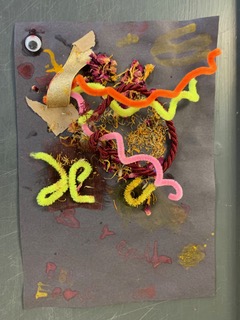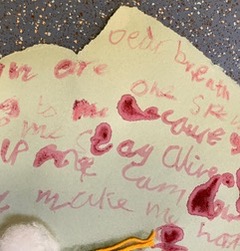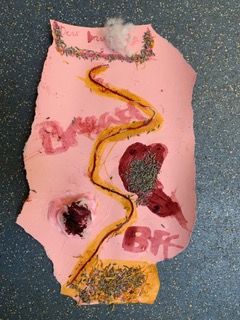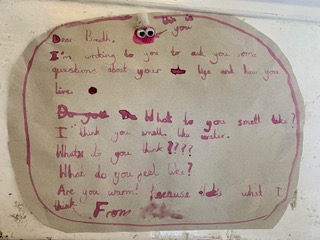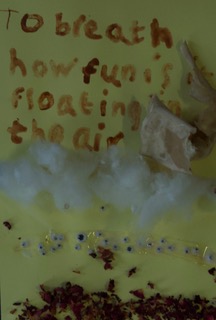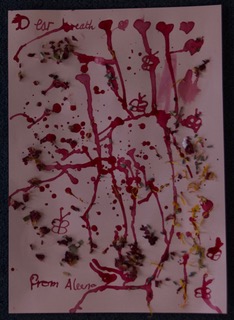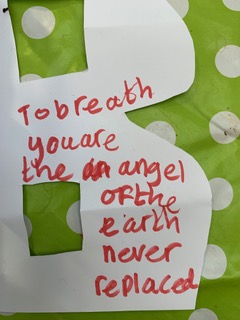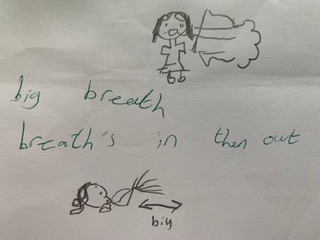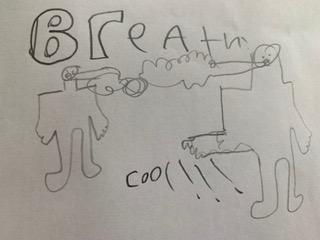Catch Your Breath: Puppetry, Dance and Creative Writing
Life of Breath collaborator and arts and health workshop facilitator, Elspeth Penny, writes about her experience of running a series of puppetry, dance and creative writing workshops in schools in March 2019.
“My breath smells like different emotions, sounds like a tsunami, tastes like Strawberry flavoured maple syrup coated popcorn and looks like nothingness”.
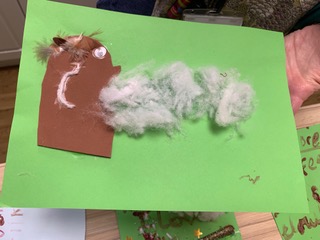
This Spring my company, 2BU Productions, were fortunate to be able to run a puppetry, dance and creative writing workshop series about the breath in three Bristol primary schools: St Werburgh’s, Glenfrome and Christchurch. We spent half a day in each school, as a pilot project, funded by the Life of Breath Project. The aim of the workshop was to explore breath and lung health, how breath relates to emotional well-being and how listening to the breath can help with emotional intelligence. The children were all in key stage 2, around 8-9 years old, and we had two groups of 30 and one of 60.

The activities included
- Puppetry with Green Ginger Director Chris Pirie: Children learnt how puppeteers breathe life into a puppet in order to animate it. They learned how central the breath is to puppetry and how those training to be puppeteers often start ‘breath holding’ when anxious or learning to move their puppet.

- Breath in Dance with dancer Daniel Martin who lives with asthma. Exploring how we use our breath in movement, making body sculptures to explore how our emotions affect the body.
- Message to My Breath. This was the starting point to the project, but the last thing that the children experienced in their workshop. I have developed ‘Letter to my breath’ workshops for Life of Breath over several years, along with Life of Breath researcher Dr Alice Malpass, and here the children created their own personal messages and works of art in which they ‘meet their breath’ through letter writing and decide whether it is friend, ally or adversary.
We experimented with a few different activities, and the order of these activities over the three days, to see how they would work. Two of the workshops included short mindfulness based practices, which we saw as ‘Breathing Spaces’ for the children and teachers within the workshop, delivered by Alice.
The work was informed by ideas of a GP working in Somerset, Sarah Temple, who runs Emotion Coaching Parenting courses (by Tuning into Kids), based on the link between emotional, mental and physical health, and using neuroscientist Dan Siegal’s hand model of the brain. Both Anna Louise, our school advisor – a year 4 teacher at Christchurch School in Clifton – and I have used the Siegal model in our teaching and work, and I have also been fortunate to have run workshops for Sarah.
Anna Louise offered advice, before the workshops, about how to ensure it fits well into the curriculum. She saw it as cross curricula, touching areas of Science (lung health; body-mind medicine), Literacy (emotional literacy and also creative writing, PSHE (“All About Me”) and Music and Drama/Movement (possibly also relevant to PE). However, our teacher at St Werburgh’s advised us, after seeing the workshop, that what we were doing was great, but actually was less about creative writing and more of an art activity. Arts activity is important in itself, but not what a school would call literacy or creative writing – that was also helpful advice.
We learned many things about what works and doesn’t work so well in a school, in a large class, and in a class where there are children who need a bit of extra attention, and we learned how tight timing is in a school. Most of our planned sessions were reduced in time because of the breaks, which involved a lot of coming and going of the children. We loved seeing the children move their bodies, giggle, be entertained by Chris’ puppet PK, to see them discover their breath and relax into using the art materials. I most of all loved to see the children’s creativity really let loose.
Here are some of the children’s responses to me asking questions:
What does your breath feel like?
Thick, soft like cotton, thin air, like a hurricane, like a clogged drain
What does your breath smell like?
Different emotions, sick, like different flowers, paper
‘What does your breath sound like?
The sea, Hurricane, Fart, Tsunami
What does your breath taste like?
Strawberry flavoured maple syrup coated popcorn, Cotton candy, Toothpaste
What does your breath look like?
Gas, Anything you want it to be, Loud, Nothingness, Steam, Juice trickling out of a plum
One of my favourite parts was listening to the children talk about their letters in front of the class, as their words and images showed information, ideas and emotional responses that they’d picked up through the series of workshops and they were really proud telling everyone about what they’d made.
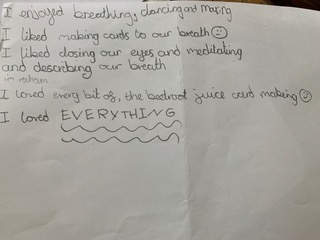
Thank you to everyone we’ve worked with for being so brilliant – the children, teachers, school staff at Glenfrome, St Werburgh’s and Christchurch Church of England primary schools; to the artistic and academic team – Daniel, Alice, Chris; to Anna-Louise, and to Life of Breath Project for funding this pilot.
